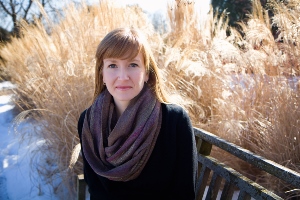
A Landscape Adequate to Loss
Contributor’s Marginalia: Nancy Reddy on “Keynote” by Christian Wiman
Christian Wiman’s stunning, sonically precise “Keynote” conjures a landscape that passes from our vision as quickly as we glimpse it. The poem begins with Wiman’s speaker addressing an audience of “Elks,/ antlerless but arousable all the same” in a dreamlike proclamation of “the paradoxical intoxicating joy” of the Void which is quickly swept up in a description of
infinities of fields our very natures
commanded us to cross,
the Sisyphean satisfaction of a landscape
adequate to loss –
That last couplet haunts me. It calls up the habit – familiar, I suspect, to many poets – of looking to landscape for consolation, as well as the hope that words can render grief and sorrow, if not exactly manageable, then at least intelligible.
•
As I-10 traverses south Louisiana, it crosses long expanses of water. It’s an improbable, unearthly landscape, marked by the trunks of bald cypress, silvered in standing water, hawks and herons nesting in the marshlands. The shoreline here is ragged, the southern border of the state feathering into the Gulf, the land losing a little to the sea each year. On the eastern approach to New Orleans, the six miles of slender roadways that make up the Twin Span are suspended just above Lake Pontchartrain, the clearance between water and roadway just 8 ½ feet most of the way across.
(Replace is with was. The storm surge of Hurricane Katrina pulled bridge segments from their piers, rendering the lake again impassable.)
If the terrain here seems unsteady, uncertain, that’s because it is. This instability is a crucial fact of the geological history of south Louisiana. The shoreline moves, and the boundary between soil and swamp is not entirely solid. It’s a liminal space, with its bayous and marshlands and gravel backroads, the kind of place where the seam between life and death is thin, where the boundary between this world and the next seems porous.
•
I lived in New Orleans the year before Hurricane Katrina, and I was five days into my second year of teaching when we evacuated. I’d been teaching English at a high school in New Orleans East, over the Industrial Canal, a world away from the nice uptown neighborhood my roommates and I had chosen for its proximity to bars, restaurants, parade routes. When, in May of the year following the hurricane I again drove east to my old school, the neighborhood was dark, roofs still blue-tarped as they had been in the weeks right after Katrina. The Taco Bell and the gas station across the street still closed, the school’s parking lot still full of parked cars, silted to their door handles. Inside my classroom, the waterline reached about my waist. Below: water and dirt smeared across the cinderblocks, workbook pages and library books scattered across the linoleum tiles. I have a photograph of Rita Dove’s “Adolescence” curled by storm water but still legible. And above the waterline: my neat handwriting, the date and a prompt for students’ journals hopefully inscribed and untouched by hurricane. I took the laminated sign that marked “Ms. Reddy’s room,” a champagne flute from the last year’s prom. I took photographs. The place escapes me anyway.
•
I write this here because it reminds me of the promise in Wiman’s poem – the hope that landscape could prove some recompense to loss. For me, this landscape – the silt and sediment of South Louisiana, the storm-ravaged city – seems both a site of loss and a representation of it. Perhaps I hope that rendering it accurately could somehow recuperate that loss. It’s a foolish idea. It’s also, to a large extent, the history of the pastoral: when language feels weak, inadequate to loss, we turn to landscape.
In the end, Wiman’s poem witnesses the sweeping destruction of both people – the speaker sees “James Wesson whiten/ to intact ash,” “wren-souled Mary Flynn die again/ in Buzz’s eyes” – and landscape – “the slush-puppy stand/ the little pier at Towle Park Pond” are both ruined. The witnesses to the poem’s eponymous keynote are all wracked, “like a huge claw,” by time. In the end, time, natural disaster, illness, the ordinary passing of a life – all ravage what we love. In the face of such destruction, no landscape really could be adequate to the task. Few poems, either. We try.
